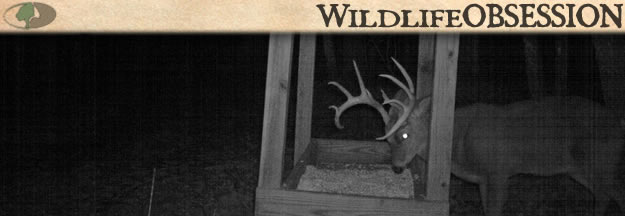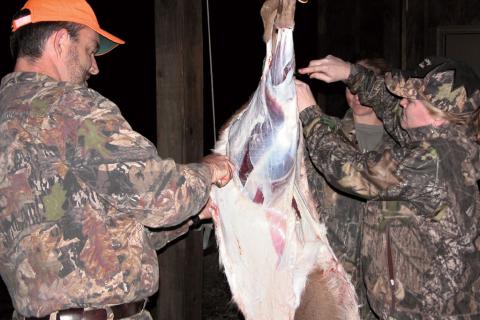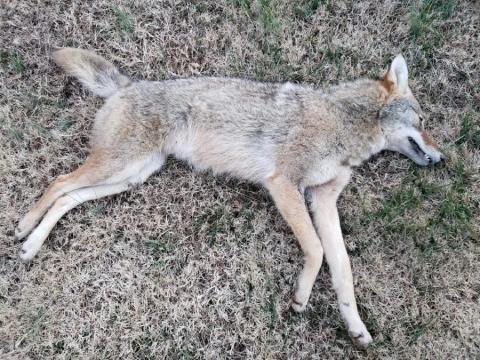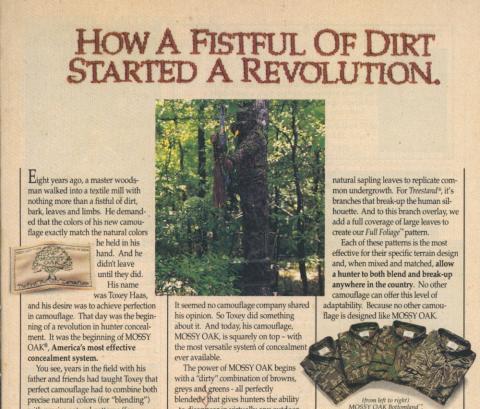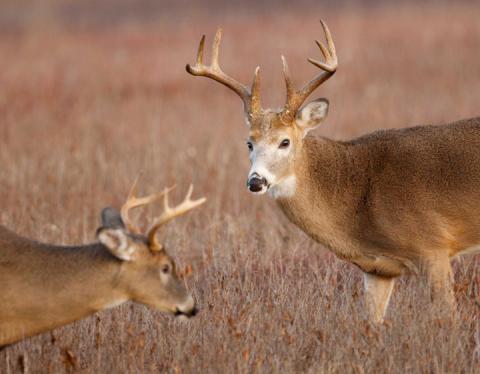Lisa Jane on Why She Hunts
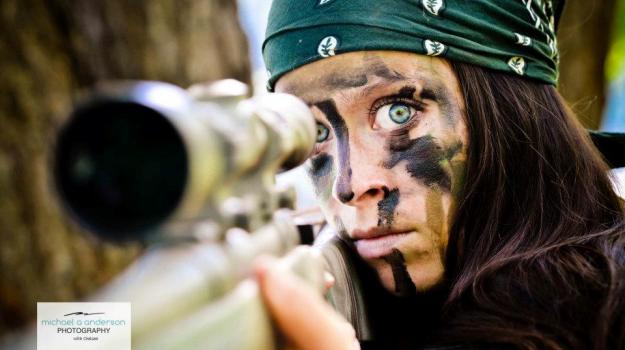
Editor’s Note: Lisa Jane Barron, known as the Writing Huntress, and her husband currently live in a township of 16 people in North Dakota, a far cry from her hometown of Rochester, New York. She’s been writing and spreading, according to her, “Social media hunting cheer,” for the past 3 years through her blogs Hunt Like You’re Hungry and Ask the Writing Huntress.
I went on my first hunt 6-years ago. My parents aren’t hunters, so I didn’t grow-up hunting. However, my granddad was a hunter and a passionate fisherman. Before he passed away in 1996, Granddad taught me to fish, and I credit him as being my hunting foundation. Through his legacy, he taught me to respect and enjoy the outdoors, something I’ve carried with me during each and every hunt. Since Granddad wasn’t around to take me hunting, I occupied myself as many girls in Rochester did – by playing hockey. From the time I entered middle school until the day I left college, I was on the ice. Hockey was essentially my reason for existing. However, in the back of my mind, I always knew I wanted to hunt.
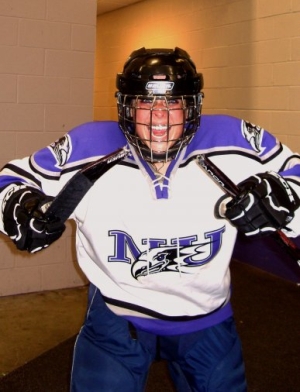 During my senior year of college, I started dating a guy who hunted and saw my chance. He taught me the basics of camo: what to wear, how to wear it and when to wear it. I learned how to properly load and fire a shotgun. At age 21, I attended my first hunter’s safety class surrounded by 8-year olds. I couldn’t sleep the night before opening day. I wasn’t sure I could kill a living animal. I made a pact with myself. If I hated hunting, I’d never do it again.
During my senior year of college, I started dating a guy who hunted and saw my chance. He taught me the basics of camo: what to wear, how to wear it and when to wear it. I learned how to properly load and fire a shotgun. At age 21, I attended my first hunter’s safety class surrounded by 8-year olds. I couldn’t sleep the night before opening day. I wasn’t sure I could kill a living animal. I made a pact with myself. If I hated hunting, I’d never do it again.
Nothing exciting happened until Thanksgiving morning. The guys did a push to get deer out of a thicket, while I stood atop a stand. After a few moments, a doe popped her head out. I shot her, she fell where she stood, and I cried. I went to her side and prayed – thanking her for her sacrifice and for the meals she would provide. My tears turned into joy, and I became hooked on hunting. My relationship with the guy didn’t last, but after that moment, my love of hunting did.
In a way, I have Mossy Oak to thank for making my husband want to marry me. I was visiting my best friend in North Carolina a year later, wearing cowboy boots and a Mossy Oak jacket when I met my future husband. I showed him pictures of the first doe I’d taken and my new bow. I didn’t know but later, he called his mom and said, “I think I found the girl I want to marry.” Two years after that day, he proposed to me while I wore Mossy Oak and carved the words, “Lisa, Will You Marry Me?” into the tree where I had harvested my first archery buck.
From the moment I began hunting, my life changed in many ways. Besides becoming more independent and strong, I also began to heal. During my adolescence, I pretty much stopped eating. The doctors labeled me anorexic and bulimic. Through all the outpatient treatments and group-therapy sessions, the only thing that got me to eat was threats of being barred from my hockey team. Hunting forced to me to fully understand not only where my food came from but also the immense effort that went into getting my own meat. Hunting made me proud of my kill; the meat was healthy and delicious. I even learned to cook and to love eating and to respect food.
Six seasons have passed, and I still love wild game. Currently, I hunt anything I legally can harvest in North Dakota. Since my husband and I live in the heart of the duck factory, we’ve been focusing primarily on ducks and geese. I also love to cook pheasants and grouse. Our deer season hasn’t been fruitful so far, but we’re hoping for a late-season harvest as soon as the temperatures warm-up.
Photo courtesy of http://www.michael-a-anderson.com/.
Tomorrow: The Writing Huntress Lisa Jane Discusses Mossy Oak Camouflage and Women’s Hunting Apparel
















